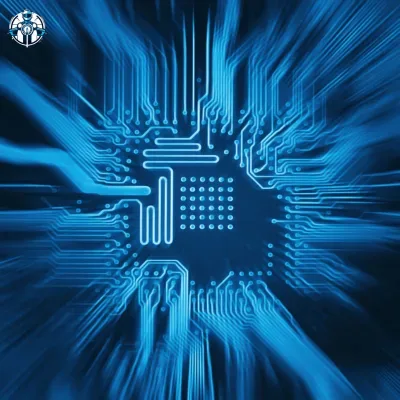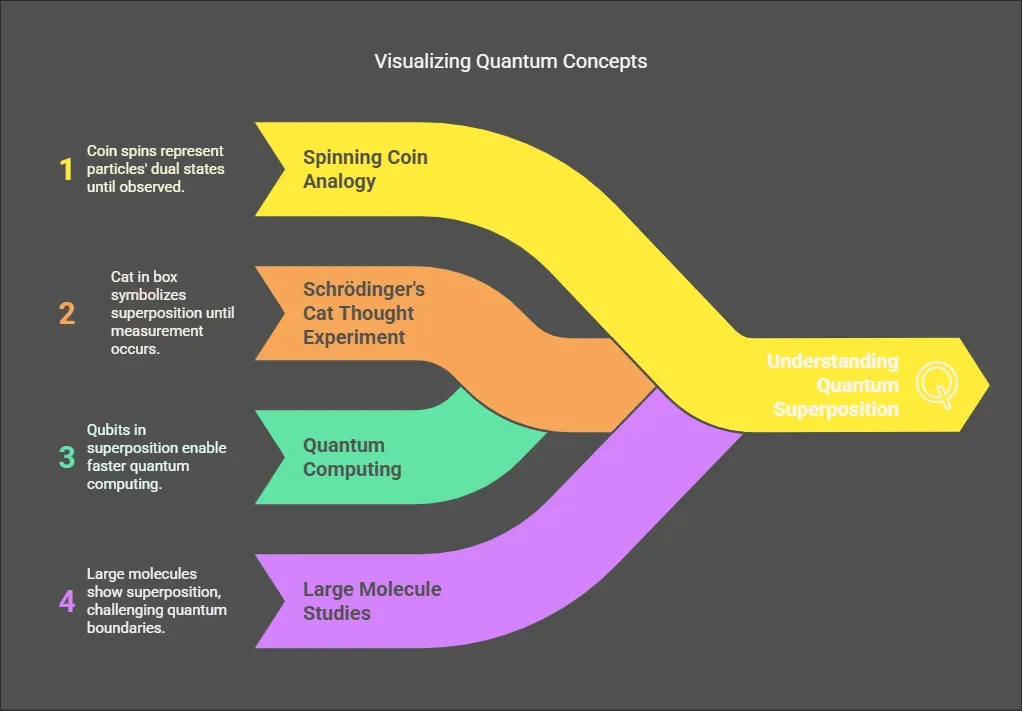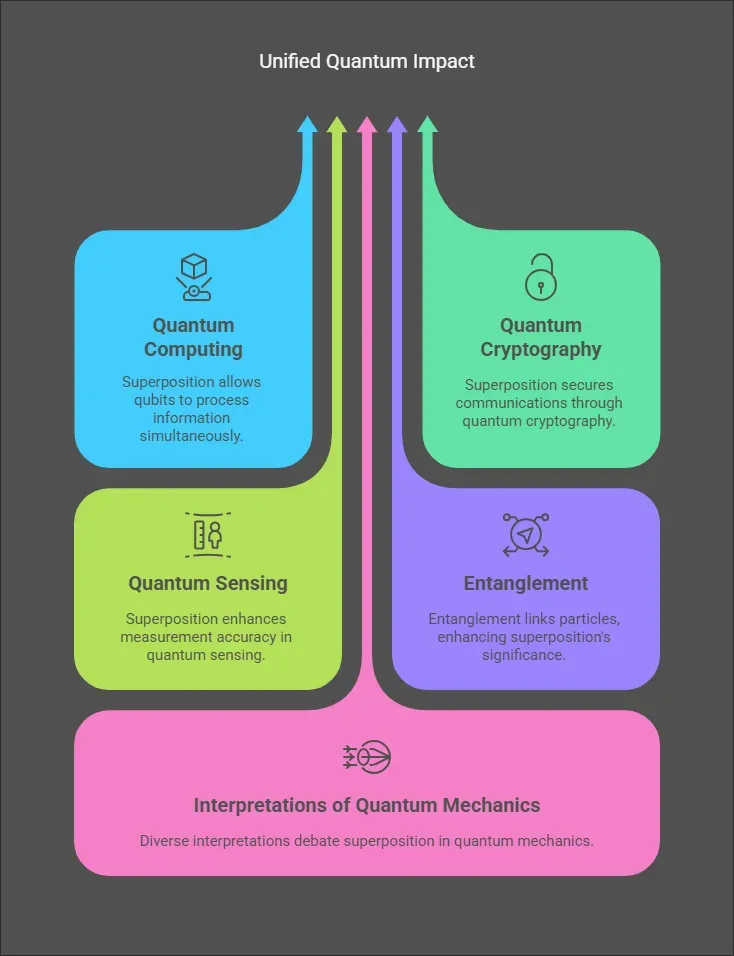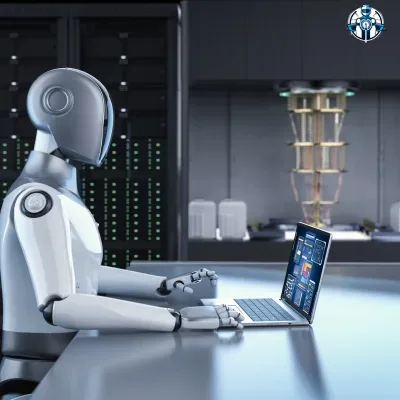Key Points
- Superposition in quantum mechanics means that particles can be in more than one state at a time until we measure them. Think of it like a coin spinning in the air; it can be both heads and tails.
- Research says that this idea is key in quantum science. Experiments like the double-slit show that particles can behave like waves. They can go through two slits at the same time.
- This evidence suggests that superposition is important for new technologies, including quantum computing. In quantum computers, qubits handle information together, not one at a time.
- It’s a complicated topic. Many people accept superposition, but there are debates about how to explain it. This is especially true when we look at larger systems.
Explore more: What is Quantum Computing? A Complete Guide (2025)
Introduction to Quantum Mechanics and Superposition
Quantum mechanics deals with the behavior of particles of matter, especially those occupying the atomic and subatomic levels. It is quite perfunctory because it can deviate from what we witness in our daily existence. One main idea is superposition. The notion from this idea is that a particle can be in a number of states at the same time and its program is simply known as the state when measured.
In this article, we will provide an overview of superposition. So, keep reading!
Explore more: How Does Quantum Cryptography Impact Cybersecurity?
What is Superposition?

Superposition implies that the quantum system can exist in different states at the same time until the moment it is observed. For instance, an electron can occupy two spin states, which include up and down, or it can exist at different levels of energy. This is quite different from classical physics, whereby objects always either are in one state or the other. When it comes to a particular issue, it always follows that it can either be in one state or the other but not in the middle.
For instance, imagine having an arrow spinning around a moving coin. As it turns around in the air, it is impossible to determine whether it is a head or tail. It’s a mix of both. In quantum mechanics it is said that the particles remain in this mixed up state until the moment they are observed. Nevertheless, they only do so “collapse” into one state as a whole. Research shows the superposition as a state of a system that is in all possible forms until the time for measurement.
Explore more: How Quantum Computing is Revolutionizing Drug Discovery
The research also reveals that superposition can be expressed mathematically by the use of wave function. Still, to simplify this concept, it can be considered as a combination of probability functions. In essence, each possibility has a propensity to be realized when we make a measurement of it.
What is the Double-Slit Experiment?

The double-slit experiment is perfect for demonstrating superposition. In this proposition, we have a screen that has a wall in front of it with two small cut-outs which serve as two peepholes. If you look through it, you observe that it consists of rather wide bands of light and rather narrow bands of dark shade. This type of pattern, called an interference pattern, is due to the nature of light behaves like a wave and can combine with another wave.
However, if you fire electrons one by one through the double slits, you may expect two bright patches on the screen. But that’s not what happens. Thus, the density of the electrons over a period of time forms an interference pattern. This means that every electron passes through the slits and at the same time passes through both slits. It is in many ways starting from path mixing until path measurement is done on it.
This experiment shows particles can act like waves. This idea is called wave-particle duality. This shows how superposition allows for interference. This phenomenon doesn’t happen in classical physics.
Explore more: The Science Behind Quantum Supremacy: Google’s Sycamore Experiment
Superposition in Everyday Terms: Analogies and Thought Experiments

To make superposition easier to understand, think of some analogies. A spinning coin shows both heads and tails until it lands. This is like how particles are in superpositions until measured. Another example is Schrödinger’s cat. In this thought experiment, a cat in a box is both alive and dead based on a quantum event, like radioactive decay, until someone looks. This idea appears in Quantum superposition in Wikipedia and shows how strange this concept is.
Explore further: How Does AWS Support Quantum Computing?
However, keep in mind this does not occur with cats in real life. Quantum effects usually only apply to tiny systems because of something called decoherence. But for small particles, superposition is real. We see this in quantum computing. Here, qubits can be in superpositions of 0 and 1. This allows for faster processing, as noted in Caltech Science Exchange.
Surprisingly, recent studies show that large molecules with thousands of atoms can also exist in superpositions. They create interference patterns in modified double-slit setups. This finding suggests quantum effects might reach larger scales than we thought, which challenges our everyday understanding.
Importance of Superposition: Applications and Implications

Superposition is important in quantum mechanics. This helps create quantum interference, which supports many new technologies. In quantum computing, qubits in superposition allow us to process a lot of information at once. This could help us solve tough problems, like factoring large numbers.
Plus, superposition plays a key role in quantum cryptography. It helps keep communications secure. It also matters in quantum sensing, which gives us very accurate measurements. Superposition connects to entanglement. In entanglement, the state of one particle instantly affects the other, no matter how far apart they are. This connection adds to its importance.
The research also discussed different views of quantum mechanics. For example, the Copenhagen interpretation says that measuring a particle collapses its superposition. Other theories suggest different ideas. Scientists still debate how to understand superposition, especially in larger systems. But most agree it has been confirmed through experiments.
Explore further: Can Shor’s Algorithm Break RSA? The Future of Encryption
Final Words
Superposition is a key idea. It shows that particles can exist in different states until we measure them. The double-slit experiment illustrates this well. Superposition is crucial for quantum technologies. While interpretations differ, recent findings with larger molecules widen its meaning.








